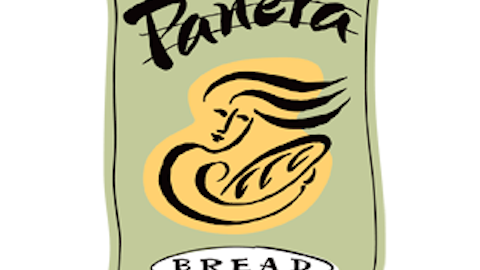Editor’s Note: The metrics, statistics, and prices the author uses in this post were taken from Yahoo! Finance on Feb. 22.
Bloomin’ Brands Inc (NASDAQ:BLMN) completed a successful IPO during August of last year. Actually, the IPO was only successful on the basis that shares rallied $1.97, or 17.9%, to $12.97 after just one week of trading. For those of you who might be unaware, Bloomin’ Brands is the parent company of five casual dining restaurants: Outback Steakhouse, Fleming’s Prime Steakhouse & Wine Bar, Bonefish Grill, Carrabba’s Italian Grill, and Roy’s. Prior to the IPO, Bloomin’ had been privately held by Bain Capital and Catterton Management since 2007.

“What’s more, $1.1 billion of Bloomin’ Brands Inc (NASDAQ:BLMN)’s debt is variable-rate, with quite a bit due over the next few years. According to the company’s amended S-1 (page F-39, for those interested), it has $332 million in debt repayments due in 2012, about $88 million due in 2013, nearly $938 million due in 2014, and another $259 million (including the $248 million in senior notes accruing 10% interest) due in 2015.”
In situations such as this, the company’s stock price is typically discounted to reflect the associated financing risks and costs. To the contrary, Bloomin’s valuation looks more akin to that of a growth stock! Consider the following: Bloomin currently sports a P/E ratio (ttm) of 30.41, EV/Revenue (ttm) of 0.91, and an EV/EBITDA (ttm) of 11.16. Darden Restaurants, Inc. (NYSE:DRI) —a fairly comparable company to Bloomin’ claiming brands such as Red Lobster, Olive Garden, and Longhorn Steakhouse, among others—on the other hand, maintains a P/E ratio (ttm) of 13.21, EV/Revenue (ttm) of 1.06, and an EV/EBITDA (ttm) of 7.90. A third company to compare Bloomin’s exorbitant valuation to is Brinker International, Inc. (NYSE:EAT), the parent company of Chili’s Grill & Bar, Maggiano’s Little Italy, and Romano’s Macaroni Grill. Brinker, like Darden, is valued at much more rational levels with a P/E (ttm) of 15.72, EV/Revenue (ttm) of 1.02, and EV/EBITDA (ttm) of 7.65.
Bloomin’s inordinate valuation becomes even more baffling upon the realization that it is not a growing company! Think about it: these brands have existed for quite some time. In the 8-K released yesterday, management stated that it expects to roll out only 45-55 new restaurants in 2013. Compared to the 1,268 Bloomin’ already owns and operates, or the 1,471 if you include those functioning as franchises, 45-55 new restaurants is an increase of merely 3.05%-4.34%. Furthermore, revenues across the company increased just 4.5% last year. With a profit margin (ttm) of barely 2% on top of everything else, Bloomin’ begins to appear monstrously overvalued and potentially in danger of future debt problems.
Accordingly, I believe Friday’s market action with regards to Bloomin’ could be the start of a severe correction for its stock price. The company ended the trading day down $0.90, or 4.99%, at $17.15. Sparking the sell-off was yesterday’s announcement of a 40% decrease in profit amidst costs associated with the IPO last August. In my opinion, profits will continue to fall short of estimates in 2013 as consumer spending on discretionary items—such as casual dining—suffers from the impact of elevated taxes and rising oil prices. It is imperative to keep in mind the fact that American families will definitively see 2% less of their income this year due to the tax increases associated with the fiscal cliff resolution before New Year’s. Further income reductions could result from the approaching federal sequestration as well. It is no wonder that consumer sentiment for lower income individuals fell to its lowest level since November 2011 in January (according to University of Michigan data). In light of such pressure on the demand side of the equation, Bloomin’s expectations of 3%-5% commodity inflation, with beef inflation in the range of 10%-12%, certainly caught my eye. The casual dining industry faces critical headwinds moving forward.
Lastly, of no fault to the company itself, Bloomin’s stock is particularly primed for capitulation. TD Ameritrade reports that 93.5% of the company’s shares are held by institutions and the short interest sits at a mere 2.09%. When the growth prospects and profit expectations of such companies begin to tumble, so does the share price. The best company I can think of for an example just so happens to also be a restaurant company: Chipotle Mexican Grill, Inc. (NYSE:CMG). I think it is safe to say that any stock market follower remembers Chipotle’s precipitous fall from $400 per share to around $250 after the growth potential appeared hindered last summer. If I’ve convinced you that Bloomin’ is headed for an imminent correction, the only question that remains is how severe it will be.
The article It’s About Time That Bloomin’ Stop Boomin’ originally appeared on Fool.com and is written by Eric Tommarello.
Copyright © 1995 – 2013 The Motley Fool, LLC. All rights reserved. The Motley Fool has a disclosure policy.




